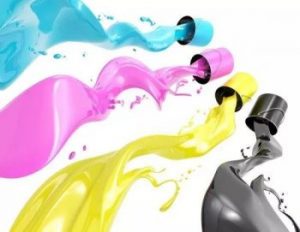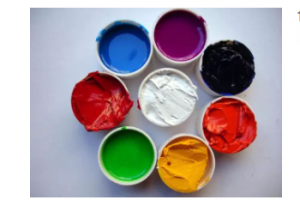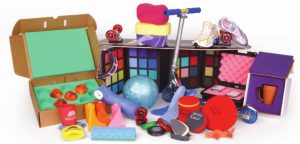Selection of water-based colorants and all pigments of water-based colorants
In recent years, with the continuous development of the domestic coatings industry, many brands of coating raw materials-color pastes have emerged. Among the imported ones are Degussa (formerly American Hess), Clariant, Ciba, BASF, and CPS (formerly Degussa). etc., there are more than a dozen manufacturers and brands of domestic colorants.
Many brands provide us coating companies with the convenience of a wide range of choices, but at the same time, the different quality of color pastes makes our selection more difficult. Several aspects that should be considered when selecting color paste are briefly described as follows:

1. Introduction to water-based colorants % O9 F” z6 w3 d
Water-based color paste refers to the organic or inorganic pigments formed under the wetting and dispersing action of surfactants (water-soluble resins can also be added) to form a uniform, stable, certain fluidity or thixotropic fluidity, strong Concentrated pigment slurry for excellent tint strength.
There are two types of water-based color paste systems: one is a resin-free system with high pigment content; the other is a resin (general-purpose resin, other single resin) system with low pigment content. Among them, the former has high pigment concentration, strong tinting power, good color development performance, good compatibility, and thixotropic fluidity. It generally does not cause color floating and blooming. The selection of additives is reasonable and has versatility. The pigment concentration of the latter is relatively low, but it has good tinting power, good color development, and relatively stable fluidity and viscosity. This system contains resin, and the compatibility needs to be tested, otherwise it will easily cause the paint to float and bloom. * d/ p! d _/ N) A Y+ J0 E) E
* v; r; r: F/ |. `
2. Main technical indicators of color paste, U6 b* u2 @: F
1. The quality of the toner in the color paste (mainly depends on its international pigment number) + c( f J: Z’ x! H2 X7 p” z4 X
– I* Q International Pigment Number: Simply understood as a pigment code uniformly formulated according to the different molecular structures of toners, this pigment number determines the light resistance (weather resistance) and chemical resistance (acid and alkali resistance) of the color paste. At the same time, it also determines the approximate hue of the color paste. Since the production processes of each color paste company are different, there may be subtle differences in the hue of the color paste.
Commonly used international pigment code list
Color CI Pigment English name Chinese name
Titanium White White 6 Dioxide Titanium Titanium White ‘ `* t5 K3 [; l% E! R) D: Y
Iron Black Black 11 Iron Oxide Red Iron Black
Carbon Black Black 7 Carbon Black Carbon Black 2 a9 M4 T9 ~! W: |- J
Ultramarine Blue 29 Ultramarine Ultramarine
Red 168 Antharuinore Red Anthraquinone Red
Big red Red 112 Monoaz Red Monoazo red/acetamide red $ V’ N; t; g’ U% Q
True red Red 254 DPP Red BO DPP red
Coral Red Red 255 DPP Red BO Coral DPP Coral Red
Iron Red Red 101 Iron Oxide Red Iron Red 9 ]2 z8 X1 M9 k; s
Light yellow Yellow 1 Monoazo yellow 2 w n& v+ h) W; L) n# i% J* ?” B
Bright yellow Yellow 3 Monoaz Yellow Monoazyellow
Bright yellow Yellow 109 Isoindolinone
Iron Yellow Yellow 42 Iron Oxide Yellow Iron Yellow / u+ B: W# ?. y0 W4 r6 @’ }
Lemon Yellow 74 Monoaz Yellow Monoazo Yellow/Aramid Yellow: T2 o$ } b7 r1 A* f
Dark Yellow Yellow 83 Disazo Yellow Disazo Yellow
Bright yellow Yellow 97 Monoazo
Yellow Yellow 138 Quinoline Yellow Quinoline Yellow + n% g* l+ a& g1 i+ ^ v# Q
Medium yellow Yellow 110 Isoindolinone (isoindolinone yellow) M9 u$ W2 V6 s! b0 G” a
Golden Yellow 153 Nickel Complex
Yellow 154 Benzimida Zolone Benzimida Zolone
Royal Blue Blue 15:1 Phthalocyanine Green Phthalocyanine Blue
Blue 15:3 Phthalocyanine Green Phthalocyanine Blue
Blue Blue 15:4 Phthalocyanine Green Phthalocyanine Blue
Green Green 36 Phthalocyanine Green Phthalocyanine Green
Green Green 7 Phthalocyanine Green Phthalocyanine Green ‘ t& [1 H$ r9 m7 D* j m8 s
Violet 23 Oxazine Violet Dioxazine Violet
Violet 19 Quinacridone Violet Quinacridone Violet
Orange red Orange 5 Dinitroaniline orange % G# P1 R. J3 H5 M; n: [
Orange Orange 43
Orange Orange 73 DPP Orange DPP Orange
Iron Oxide Brown 6 Iron Oxide Brown Iron Brown

CountryInternational pigment numbers are an important basis for one-to-one correspondence of product models of different colorant companies. When we test the quality of different brands of colorants, we should choose colorants of the same pigment number from different manufacturers for comparison. Any colorant company must provide customers with the international pigment number of its colorants.
Full understanding of toner quality is the most important basis for latex paint manufacturers to select colorants for different application fields (such as interior and exterior wall paints).
$ j* y9 _2 q3 J) S1 f
2. Coloring strength (tinting power) of color paste’ `) d! u; ~+ U( O4 Z% k5 v
4 r5 y& s4 `- @& B( r
Tinting power refers to the number of grams of a certain color paste used when adjusting 100 grams of white latex paint containing titanium dioxide to 1/25 standard color depth. The smaller the amount of color paste, the stronger the tinting power.
For the comparison of water-based color pastes, tinting strength is an important indicator, which reflects the color concentration, color development performance and pigment dispersion flocculation of the color paste. The stronger the tinting power of the color paste, the less the amount of color paste used during color mixing, the smaller the impact on the coating film performance, and the lower the color mixing cost.
3. Color difference ΔE8
‘ \) e# L. U6 N* \9 q
The stability and color reproducibility of color paste are mainly reflected in two aspects: tinting strength and color difference. The color difference of color paste includes the color difference between different production batches of the same color paste and the color difference between different packages of the same batch. The size of color difference is expressed by ΔE, including color hue, lightness and darkness, and saturation.

The calculation formula is as follows:
ΔE = (Δa2+Δb2+ΔL2)1/2 & , K5 ^; W/ }4 p! g6 |/ W
The color difference of color paste affects the accuracy of color mixing and the stability of color mixing formula.
In this regard, there are still some gaps between domestic colorants and imported colorants. For example, Degussa’s Flexobrite c series factory-mixed colorants and COLORTREND 888 series mechanical colorants are generally not up to this level. level.
! ~/ U3 B5 [: y0 [5 G’ D
4. Light resistance and weather resistance of color paste
The light and weather resistance of color pastes is tested through outdoor exposure (for example, there are exposure fields in Florida, the United States, and Turpan, my country). However, the actual outdoor exposure time is too long. Nowadays, most of the color paste performance testing is done through simulation of instruments and equipment. test. + I) a+ K* ]. [5 O( u’ b( s
Light resistance test: exposed under xenon light, measured with a blue wool ruler, expressed on a scale of 1-8, with level 8 being the best and level 1 being the worst. / C7 V q. h: b+ j! V
Weathering resistance test: Use ATLAS aging instrument, regularly expose to xenon lamp and spray with water for 500 hours. Color difference is expressed according to ISO gray scale 1-5, with level 5 being the best and level 1 being the worst.
The color paste used for exterior walls needs to have a light resistance of level 7 or above and a weather resistance of level 4 or above at the same time.
/ P0 L” z! q8 B% G) u$ s% q
5. Pigment content of color paste
The pigment content is for reference only and cannot be used as an indicator to evaluate the performance of the color paste. The tinting power of the color paste is not simply proportional to the pigment content. The same pigment content has great differences in tinting strength with different fineness. In order to ensure the stability of the tinting strength of the color paste, the pigment content of the color paste changes within a certain range. The value provided in the color paste data is a typical reference value.
6. Fineness of color paste
Fineness is an intuitive indicator that reflects the coloring power dispersion effect and storage stability of the color paste. Generally speaking, for the same pigment paste, the smaller the particle size, the greater the specific surface area, thus increasing the covering ability and the higher the tinting power; the smaller the fineness, the higher the gloss, and the dispersion effect and storage stability are poor. The better.
Of course, the finer the finer the color paste, the better, because when the particles become smaller and their specific surface area increases, the absorbed light energy increases and the degree of damage also increases, resulting in a decrease in its weather resistance; and When the particle size is too small, when the paint film forms and dries, as the water precipitates, the color paste migrates to the surface, which can easily cause inaccurate color matching and wall color differences. & {1 N6 s* X% B4 A’ y9 J1 @8 t2 K6 s
+ F% i6 T; y! e$ R9 K: |; ^, m) `
7. Compatibility of color paste and paint
Take 100 grams of white paint using the finger grinding method, add 2-3 grams of the color paste to be tested, mix thoroughly, and apply it on the surface of the object to be coated. When it is about to solidify, grind the surface part of the coating with your fingers. After the film is completely dry, observe whether there is a color difference between the areas that have been rubbed with your fingers and those that have not been rubbed. If the difference is large, the compatibility between the color paste and the paint being tested is not good. The paint prepared with this color paste will Easy to produce floating color phenomenon. If the colors are the same, there will generally be no floating color phenomenon. \( L. y9 K: ]* Y/ H/ H
When choosing color paste, you should focus on the above factors. Color pastes of various brands can basically meet other conditions and there is not much difference